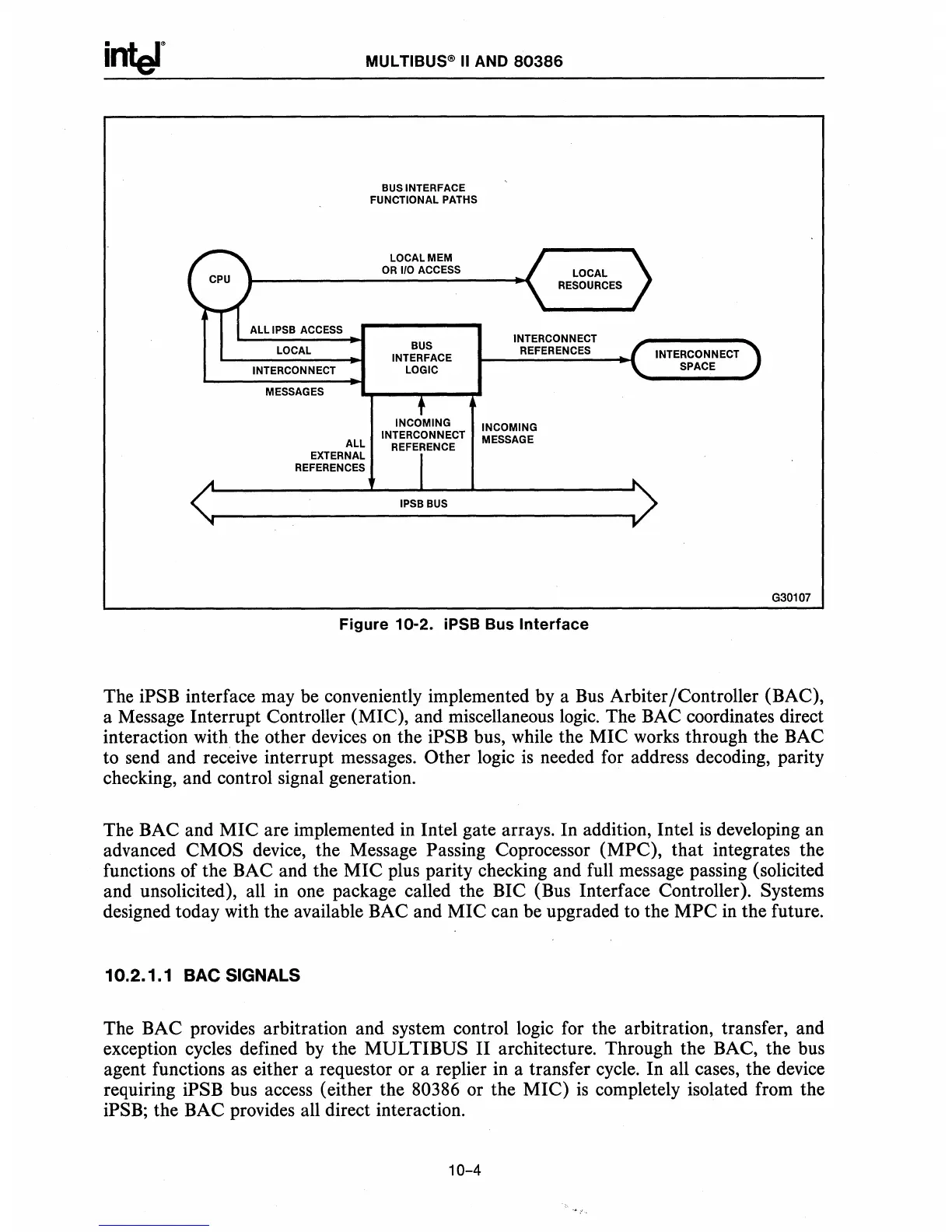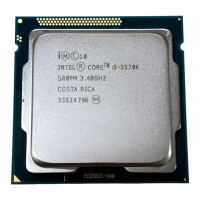MESSAGES
ALL
EXTERNAL
REFERENCES
MUL
TIBUSCi>
II
AND
80386
BUS INTERFACE
FUNCTIONAL PATHS
LOCALMEM
OR
I/O ACCESS
BUS
INTERFACE
LOGIC
INCOMING
INTERCONNECT
REFERENCE
IPSBBUS
INTERCONNECT
REFERENCES
INCOMING
MESSAGE
Figure 10-2. iPSB Bus
Interface
INTERCONNECT
SPACE
G30107
The iPSB interface may be conveniently implemented
by
a
Bus
Arbiter/Controller (BAC),
a Message Interrupt Controller (MIC), and miscellaneous
logic.
The BAC coordinates direct
interaction with the other
devices
on
the iPSB bus, while the MIC works through the BAC
to send and receive interrupt messages.
Other logic
is
needed for address decoding, parity
checking, and control signal generation.
The BAC and
MIC
are implemented
in
Intel gate arrays. In addition, Intel
is
developing an
advanced
CMOS device, the Message Passing Coprocessor (MPC), that integrates the
functions of the BAC and the MIC plus parity checking and full message passing (solicited
and unsolicited), all
in
one
package called the BIC (Bus Interface Controller). Systems
designed today with the available BAC and MIC can be upgraded to the MPC
in
the future.
10.2.1.1 BAC SIGNALS
The BAC provides arbitration and system control logic for the arbitration, transfer, and
exception cycles defined
by
the MUL TIBUS II architecture. Through the BAC, the bus
agent functions as either a requestor or a replier
in
a transfer cycle. In all cases, the device
requiring iPSB bus access (either the
80386 or the MIC)
is
completely isolated from the
iPSB; the BAC provides all direct interaction.
10-4

